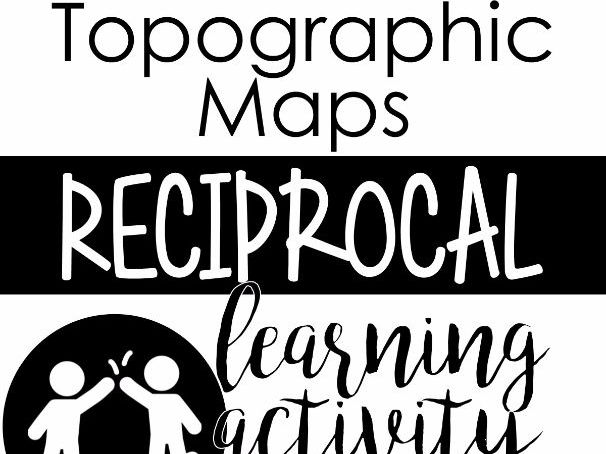

This reciprocal learning activity gives students the opportunity to practice interpreting topographic maps. Each student in the partnership will have the chance to identify the contour interval, determine changes in elevation, distinguish between steep and gentle slopes, determine elevations of given points, identify common features found on maps, and much more!
What is the Reciprocal Learning Strategy?
Reciprocal Learning is a student-pairing strategy designed with the principles of effective coaching in mind. Each pair of students forms a learning partnership committed to helping each other reach a particular learning goal. Each student plays two roles: as the player, each student works to complete an activity or solve a problem while “thinking out loud”; as a coach, each student observes the player’s work and listens to the player’s thinking while providing praise, feedback, and clues that help the player complete the activity. Because of these dual-roles, the power of learning is effectively doubled.
In this activity, each player is given 10 unique problems to solve as their coach guides, encourages, and provides support when needed. After these 10 problems are completed (and correct), the students switch roles and the second player solves 10 different problems (with a different map) as the other player coaches.
To see a quick overview of this teaching strategy,
©2016 Science Teaching Junkie, Inc. Terms of Use - this resource is for use by one teacher only. Additional teachers must purchase their own license. If you are interested in purchasing several licenses, please contact me for a district-wide or campus-wide quote. This product should NOT be posted on any website. ScienceTeachingJunkie@yahoo.com
What is the Reciprocal Learning Strategy?
Reciprocal Learning is a student-pairing strategy designed with the principles of effective coaching in mind. Each pair of students forms a learning partnership committed to helping each other reach a particular learning goal. Each student plays two roles: as the player, each student works to complete an activity or solve a problem while “thinking out loud”; as a coach, each student observes the player’s work and listens to the player’s thinking while providing praise, feedback, and clues that help the player complete the activity. Because of these dual-roles, the power of learning is effectively doubled.
In this activity, each player is given 10 unique problems to solve as their coach guides, encourages, and provides support when needed. After these 10 problems are completed (and correct), the students switch roles and the second player solves 10 different problems (with a different map) as the other player coaches.
To see a quick overview of this teaching strategy,
©2016 Science Teaching Junkie, Inc. Terms of Use - this resource is for use by one teacher only. Additional teachers must purchase their own license. If you are interested in purchasing several licenses, please contact me for a district-wide or campus-wide quote. This product should NOT be posted on any website. ScienceTeachingJunkie@yahoo.com
Something went wrong, please try again later.
This resource hasn't been reviewed yet
To ensure quality for our reviews, only customers who have purchased this resource can review it
Report this resourceto let us know if it violates our terms and conditions.
Our customer service team will review your report and will be in touch.
$4.50